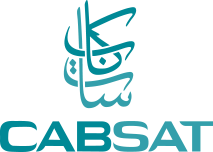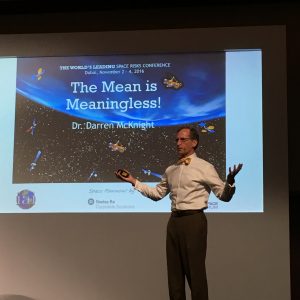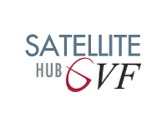 We hear the same thing over and over again at industry conferences all over the world: ‘We must do something about orbital debris’ and yet, somehow, there has been a failure to act. This is a hugely serious problem that has the potential to cause catastrophic collisions in orbit, putting critical communications and observation satellites out of service and in turn, causing thousands of new orbital debris to add to the already polluted space environment.
We hear the same thing over and over again at industry conferences all over the world: ‘We must do something about orbital debris’ and yet, somehow, there has been a failure to act. This is a hugely serious problem that has the potential to cause catastrophic collisions in orbit, putting critical communications and observation satellites out of service and in turn, causing thousands of new orbital debris to add to the already polluted space environment.
Perhaps it’s down to the fact that there has been just one catastrophic collision event, in February 2009, when an Iridium satellite was destroyed by an untracked spent Soviet rocket stage. With one major and a small handful of minor instances involving space debris, has this made the space industry sit back and wait for something more to happen before it actually gets around to acting on what is a real and present threat?
“The risk of catastrophic collision events is largely unpredictable and due to the inability to clean up the result of collisions, we cannot wait for it to happen and then remediate the results,” says Dr. Darren McKnight, Technical Director at Integrity Applications. McKnight leads teams to develop solutions across very diverse domains, one being orbital debris. He continues: “No one has ever gotten an award (or won business) to prevent a disaster that never occurred.”

McKnight presented a key paper entitled ‘Preliminary Analysis of Two Years of the Massive Collision Monitoring Activity (MCMA)’, at the IAC in Adelaide last year. In an article for ROOM Magazine, he highlighted that: ‘We are striving to break out of the cognitive bias of studying 100-year evolution models, waiting for someone to develop Active Debris Removal (ADR) solutions or hoping that massive collisions will not occur.’
The MCMA was developed by McKnight and his team to address some principle questions: What are the most consequential events that can occur in low Earth orbit (LEO)? What does the average collision event within the satellite catalogue really mean? Can we predict the most likely next massively catastrophic collision? Can we enhance the utility of ADR operations? And, can we respond to an individual potential collision?
Space safety is critical. And as the orbits above the Earth become increasingly crowded with tens of thousands of pieces of debris comprised of everything from paint flecks to spent rocket stages; and with promises of mega constellations of small satellites well developed and moving into production in the very near future, can this unwillingness to act within the aerospace sector continue? How much do we really know about space debris and the threats it poses?

Ian Christensen, Project Manager; Credits: Secure World Foundation
Heightened concern about space debris is concentrated on the LEO and GEO orbital regions. “In general, knowledge of the debris population in LEO is better than that in GEO,” says Ian Christensen, Project Manager at the Secure World Foundation. “In GEO, debris objects less than 1m in diameter are not consistently tracked – and few systematic surveys of the debris population have been conducted. There is need to better understand the debris environment in GEO, a recent study has found that collision risk in GEO is significantly higher than previously thought. More work is needed to understand this risk. The findings also suggest a need for improved operator debris risk mitigation practices.”
To begin with, it might help to firstly look at the three components of overall space safety.
The Three Components of Space Safety
Space Traffic Management (STM) is the management of interactions between space operators and with the space environment. This type of management requires immediate attention (from seconds to days) and includes aspects such as the reliability of spacecraft, RF interference identification and resolution, collision risk and automated decision support.
STM is informed primarily by the second major domain, which is Space Situational Awareness (SSA). This discovers, monitors, characterizes, and warns about space objects that are non-operational. This component produces resources that inform us about the mid-term which could be from minutes to months, and flags up intentional hazards.
SSA is informed by Space Environmental Effects and Modeling (SEM) activities that make use of modelling tools to look at the behaviour of space objects and this helps, over a longer term period of weeks to decades, to inform on challenges such as ADR, just-in-time collision avoidance (JCA) and natural phenomena such as space weather.
How do we know what is up there?
At present, the existing, most up-to-date database of orbital debris is held by the Joint Space Operations Center, which is a division of the United States Air Force and holds a catalogue of around 22,000 objects that are over 10cm in LEO and 1m in GEO. However, there are still thousands upon thousands of smaller objects that have the potential to cause what McKnight describes as “mission –terminating impacts and even debris-producing events”, especially in LEO where objects move at a greater velocity.
In addition to the U.S. military, there are other, new commercial and military capabilities in development that will become available with the capability to track objects that are smaller – even just a few centimetres in size.

Though the data provided by the U.S. Military’s current tracking capability is free and valuable, Moriba Jah, Associate Professor, Aerospace Engineering and Engineering Mechanics at the University of Texas, and ardent space environmentalist, says there is a problem with transparency. “The DoD finds itself in a very unfortunate situation where it’s been providing these things to the global community but at the same time, because of its mission and purpose, by definition it can’t be fully open and transparent.”
Jah believes that there is a real need to migrate the space debris database away from the DoD. He explains: “This is one of the things that is motivating the U.S. government to find an alternate solution to space traffic management and SSA to support orbital safety. The Federal Aviation Administration (FAA) has been put forth as the body to take this on. To that effect, the FAA has been given the green light to conduct a pilot programme to assess its ability to provide those products to the community.”
In addition, the products used by USSTRATCOM are derived products, which means that they are not raw sensor observations. “It’s not like they collect telescope data or radar data and make it available to the world” says Jah. They are not going to do that because they are DoD related sensors, and providing that data to the world could reveal vulnerabilities or sensibilities that could then affect US national security. This is another reason why it needs to be migrated away from the DoD.”
There are commercial companies that are developing solutions, but Jah believes that these also are problematic. “Some commercial companies want to simply be paid to do the space traffic work, and say they have the right answer, but won’t disclose the Math or physics (models and algorithms) they are using,” says Jah. “They simply say, give me money and data and I’ll provide a product that you should trust. The US government is similar. They ingest data (and money from congress) and provide a product. The difference between these two is that the commercial one costs money to the user, directly while the government one is tax-payer funded. They’re both ‘black boxes'”.
Jah believes that a large part of the solution lies in the creation of a space taxonomy which will allow us to tag and track what is up there but more importantly, to analyse how those pieces of debris behave. Every piece of orbital debris is inherently different and will therefore behave differently in space. Therefore, the ability to place a marker on these objects and gain this information can help us to more accurately predict what might come to pass.
“There is no equivalent of this monitoring of how objects interact with other objects and how they interact with the environment to extract holistic inferences about the population and how it’s behaving” says Jah. “There is no scientifically derived, community-standard classification scheme for manmade objects. One of the accepted things is that we have debris, rocket bodies, and payloads. Can three categories really uniquely classify everything in space? Of course not. As long as we treat everything like it’s a sphere – just a dot in space, we are hindered by how much we can understand”.
This understanding of behaviour is important as objects behave very differently depending in what orbit they are in. Jah continues: “A piece of multi-layered insulation in LEO is going to behave quite differently to a piece of multi-layered insulation in Geostationary Orbit because it’s a different environment, a different “habitat.” We cannot understand that unless we have a classification scheme that is scientifically informed. So, the taxonomy has to be a classification scheme that can explain past observations, it has to be able to uniquely identify objects in space and it has to help us to predict what the behaviour is going to be in the future.”
Garnering this information is a huge task but it is also the most accurate means of taking control of the situation. “No one wants to be the one having to maneuver and spend their fuel to get out of the way of a predicted collision that based on inaccurate math and physics was never real to begin with” says Jah. No one wants to shoulder the investment in Space Traffic Management for others to enjoy unless they can get paid to do it. No one has a data lake of comprehensive sources of information. Everyone infers what that want or can do from an incomplete or unquantified set of data.”
This is precisely what Jah is trying remedy. Knowledge is power and the more we know about orbital debris, the better.
Outdated Policy
It is clear that, along with the rise in the amount of satellites deployed to all orbits, guidelines for operators on best practice need to move with the times and attention needs to be given to embrace the new movement in small satellites that is currently in full swing.
“Current international practice on space debris mitigation is based on the IADC Space Debris Mitigation Guidelines – a core principle of which calls for satellites to be either de-orbited or moved to a graveyard orbit no more than 25 years after their end of service date,” says Christensen. “This standard was originally developed before the current growth in the number of operating satellites – and the accompanying diversity in operator and system types – was imagined. One concern with the existing debris mitigation guidelines is that they were created for essentially a “business as usual” space environment. What we’re seeing is a massive increase in the number of satellites going into space over the next decade, which could exacerbate things even if the 25-yr rule is followed. There is likely need to revisit that 25-year standard to develop more specific and distinct guidelines appropriate to the diverse range of uses and satellite types we see today.”
Christensen also explains that, in terms of compliance with the existing guideline of 25 years, there is much room for improvement. At present, in LEO, from data compiled by ESA, approximately 60% of LEO spacecraft comply with the 25 years and this means that the importance of space debris mitigation needs to be communicated and better understood by the NGSO (Non Geostationary Satellite Operator) operator community. On the other hand, it is also important for understanding on the other side – what are the reasons for non-compliance. “This may entail further regulatory and policy action; as well as improved sharing of SSA information,” Christensen adds.
New Constellations, Increased Threat of Collision?
We know that the space industry is currently in the grip of mega constellation fever as we see the companies such as LeoSat, OneWeb, SpaceX and Spire prepare for the production and deployment of huge amounts of smallsats into LEO or those, like Planet, that are already the midst of making their constellation a reality. How seriously are these companies taking the issue of space debris and how are they proposing to mitigate the effect on the space environment?
“The current constellation managers and emerging constellations (such as OneWeb and Spire) are taking it very seriously” comments McKnight. “In addition, it is critical to examine the key problems and not just the problems du jour. More specifically, space operations will be assured by addressing the phenomena that will have the greatest effect on constellations to operate reliably. For example, do not overlook existing on-orbit space safety concerns such as mitigation compliance, derelict-on-derelict collisions, attributing spacecraft anomalies, ramifications of severe space weather, spacecraft reliability, etc.”
McKnight puts forward three questions that should form discussions on the space-based parts of these new constellations:
Reliability: How reliable will your space systems be during deployment, operations, and retirement? Previous satellite and constellation deployments have shown that the time where most satellites are lost is in launch and the first 30 days on orbit.
Collision Avoidance: Have you employed viable means to avoid collisional interactions between members of your constellation? The initial focus should be on the potential collision risk that is directly a result of the new deployments.
Potential Interactions: Have you considered and planned for potential interactions from objects and other debilitating phenomena outside of your control (e.g., debris, other constellation members, natural space environmental effects, severe space weather event, prolonged RFI activity, etc.)? Previous history has shown that the set of satellite risks are evolving quickly and must be part of any long-term understanding of satellite/constellation operations assurance.
It is also critical that the ground infrastructure is not forgotten. This is just as important in terms of overall assurance of space operations. Two questions that might be considered as a starting point for the non-space-based parts of these constellations would be:
Redundancy: For the ground segment of your business, do you have redundant paths for the telemetry, health maintenance, and service (e.g., imagery, video, data, voice, etc.)?
Resiliency: Is there resiliency built into your architecture if the ground segment of your operations are terminated for a period of time and for how long?
Christensen points out that we are moving into an unknown era in satellite deployment and we do not yet have the understanding of the operational challenges and implications they may bring. These new constellations do, however, have the potential to expand the benefit received from space technology on Earth.
This has meant that operators have had to shift their attention to what it truly means to be a responsible space actor and what principles must be upheld including space debris mitigation, spectrum use, satellite end-of-life safing and intra-operator coordination mechanisms.
“Industry actors have called for collaborative action and for increased policy and regulatory attention to space situational awareness and space debris matters It remains to be fully seen, as these constellations are deployed, how statements related to responsible operations will be reflected in actual practice” says Christensen.
Christensen also points out that, given the amount of satellites deployed into LEO, there could be the opportunity to change the economics of space debris removal which currently represents a huge financial challenge for the space community.
Next Steps: GVF Space Situational Awareness Initiative
GVF is being extremely proactive in the field of orbital debris and, after hearing from its members, has created the Space Situational Awareness initiative, established in September 2017 at World Satellite Business Week in Paris. The organisation is working closely with the European Space Agency (ESA), the Space Data Association (SDA) and the Satellite Industry Association (SIA) on the drafting of Orbital Debris Mitigation Guidelines developed to prevent and mitigate orbital debris situations with a focus on international coordination, space surveillance and risk models.
“As a reflection of industry trends, GVF membership has increasingly come to include NGSO operators, as well as GEO operators” said David Hartshorn, Secretary General of GVF. “Collectively, this broader industry representation has conveyed to GVF that they believe there is a need for a global industry consensus-based best practice guidance that can be used to inform the short, medium and long-term directions taken by industry, as well as facilitate consideration being given to the issue by governmental and inter-governmental organisations.”
A first draft of the guideline was prepared and reviewed during the initial meeting in Paris. Since then, industry and governmental subject-matter experts have held a series of follow-on meetings. The next of these was held last Friday 5th January in Washington, D.C. with more to follow.
GVF has lead discussions with NGSO and GSO industry stakeholders on the challenges, market trends, potential for government and regulatory interventions. The development of draft guidelines will also provide the opportunity for industry stakeholders to discuss establishing international consensus.
Biggest Challenge Yet
As we have seen here, there are many piece of the jigsaw that will need to be brought together in order to effectively tackle the huge challenge of orbital debris. This will involve better understanding of what is up there and how it behaves along with Active Debris Removal, policy and regulatory changes and establishing true consensus within the industry about where is goes from here and how it makes a concerted effort to move forward on the issue. One thing is for sure and that is that immediate action is required now.
So is there a future business cleaning up space? Surely this has to be the case as a sustainable clean-up effort must be initiated.
Christensen believes that there needs to be better understanding of the differences between satellite end-of-life services and the removal of existing debris from historical operations.
“We need to draw a distinction between satellite end-of-life services for large constellations and removal of existing debris from historical operations. Large constellations operators have a vested business interest in maintaining a safe operating environment – and active de-orbit services (in particular for failed satellites) may be a viable market. If the markets that the large-constellation operators are pursuing develop according to projections, it may result in the creation of an economically valuable region in LEO, which might in turn support closing of business cases related to satellite deorbit services. Technology developed for satellite de-orbiting may itself be usual for other space debris removal operations. There are a lot of “mays” in that argument – but a potential business path can be seen.”
McKnight points out that a viable business case for the removal of historical existing debris items, such as spent rocket stages, has not yet been proven. He notes that governments of space faring countries, such as the U.S. will need to take the lead and establish a dedicated agency to tackle the problem. “There is need for policy and governmental action to support the development of active debris removal technologies – in particular in providing consistent technology development funding, and addressing bureaucratic barriers related to ownership and liability questions concerning existing space debris objects”, he concludes.
 It’s a massive job but the problem of space debris has to be jumped upon now before it spirals out of control. If humanity is to preserve the precious orbits that we have in order to continue to use them well into the future, our response today is of the utmost importance.
It’s a massive job but the problem of space debris has to be jumped upon now before it spirals out of control. If humanity is to preserve the precious orbits that we have in order to continue to use them well into the future, our response today is of the utmost importance.
Orbital debris and the debates swirling around it will be the focus of a panel discussion, Orbital Debris: Dynamics in Mitigation Innovation, at the GVF Satellite Summit to be held at CABSAT. Join in the conversation with SpaceWatch.Global’s Torsten Kriening from 15.45 – 16.45 on January 16, 2018. Don’t miss it!
 SpaceWatch.Global An independent perspective on space
SpaceWatch.Global An independent perspective on space

